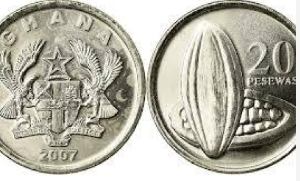Stories about substandard drugs on the Ghanaian market don’t seem to escape the headline news as they are seamlessly reported in the mainstream media. Perhaps the grisly perils associated with the usage of substandard drugs don’t seem to grab the nation’s attention for long unlike other sociopolitical issues (e.g. homosexuality), let alone spur a systematic national approach to deal with it once and for all.
Presidential State of the Nation Address as well as manifestos of major political parties have all been reticent about the dangers of substandard drugs in the country. The dearth of political will to deal with this menace continues to pave way for players in the murky world of substandard drugs to keep on having their day.
In Ghana, all the substandard drugs that make infamous headlines —which are sometimes detected through the strident diligence of the Food and Drug Administration (FDA)—have been traced to be imports of Asian pharmaceutical companies (APC). Post-market surveillance by the FDA often reveals harrowing findings: Some of these medicines do not contain the required amount of an active ingredient or are even devoid of an active ingredient all together. A case in point was when in 2010, the FDA through its post-market surveillance activities detected that two brands of antibiotics—Cipro-Dor (Ciprofloxacin HCl) and Clavu-Dor (Amoxicilin 500mg and Clavulanic Acid 125 mg)—that were being imported from China were “unwholesome.” In its statement, the FDA averred that the two drugs, already circulating on the market at that period were “substandard” and that “patients who had been put on those medications might be at risk, since they could not cure the diseases for which they were prescribed.” Another frightening incident of this nature occurred just in the month of February this year. In this particular case, a brand of an antibiotic imported from India—Rox Clave 625--meant to contain two active ingredients—Amoxicillin 500mg and Clavunate 125mg—was in fact lacking the Clavunate component.
Within the same month of February, the FDA in collaboration with the police arraigned a suspect before court for importing a consignment of counterfeit Tres-Orix Forte, an appetite stimulant, into the country from China. The sitting judge, in the legal proceedings of this case noted that importing substandard drugs into the country is a grave offence just like armed robbery. Whiles in the process of finalizing this write-up, a fresh horrendous story on www.myjoyonline.com titled “FDA uncovers massive fraud by 3 giant pharmaceutical companies, lives of millions at risk,” pops up and gives a testament to the concerns about the safety of drugs from APC. “The substandard and contaminated Oxytocin injections according to the FDA were manufactured in China by companies with no addresses,” the story reported. The reasons for the higher incidence of substandard medicines being of Asian origin are not difficult to be crystallized: One fundamental reason is that, Asia is home to 70% of the world's drug manufacturing sites and therefore has an edge for a larger turnover of medicine production. This tremendous turnover of pharmaceutical manufacturing from Asia, undoubtedly, is associated with a high probability of either intentionally or inadvertently producing a glut of substandard drugs unto the market. And all over the globe—developed countries included--, millions of people rely on affordable drugs produced from Asia, with China and India leading the race of affordable drug exportation. In the healthcare circles, India has been cited as being the “pharmacy of the developing world,” providing most of the needed active pharmaceutical ingredients and finished products to foreign countries.
The aforementioned underlying factor conveniently dovetails with the nature of the Ghanaian pharmaceutical commerce; it is an import-driven business. Statistics available at the FDA indicates that imported finished pharmaceuticals make up a staggering 80% of the drugs in its register. There is a ravenous appetite by local pharmaceutical wholesalers to import cheap medicines from China or India in order to make huge profits against effortless cost of business operation. Under the guise of cost-effectiveness, the National Health Insurance Scheme (NHIS) has also ramped up the insatiable craves of local pharmaceutical wholesalers for Indian or Chinese pharmaceuticals a notch further. The prices of most medicines that are manufactured by Ghanaian-, US- or European-based companies fall outside the price limits of medicines listed in the National Health Insurance Drug Lists. In a desperate attempt to cash-in on profit--and evade loss--the shelves of pharmacies of most health facilities—including Central Medical Stores-- in this country are flooded with ridiculously low-priced and poor quality Chinese and Indian manufactured medicines. Having been riding the wave of affordable medicines from India and China, Ghanaian healthcare consumers need to inquire about the safety and efficacy of these Asian pharmaceuticals that are willy-nilly forced down their throats at the various healthcare facilities.
Presently, there is a growing concern about the safety and efficacy of drugs imported from Asian pharmaceutical companies (APC) due to their unenviable notoriety for substandard drug production. In his article to Cable News Network (CNN), John D. Dingell, a senior member of the House Committee on Energy and Commerce, which has jurisdiction of the US FDA, grumbled about the abysmal oversight of his country’s drug regulatory agency on APC. According to him, this can be attributed to inadequate funding as well as lapses in drug regulatory laws hamstringing the US FDA from having a firm grip on APC and hence lacking an extended authoritative power to subject them to the level of scrutiny as applied to US-based pharmaceutical manufacturers. Mr Dingell paints a gloomy picture that the US FDA lacks the ability “to conduct comparable inspections of domestic and foreign pharmaceutical manufacturers.”
In another article “FDA Scrutiny Scant in India, China as Drugs Pour Into U.S.”(Sunday, June 17, 2007, Washington Post)--adding to the pool of worries about the safety and efficacy of pharmaceuticals from China and India--, Washington Post Staff Writer, Marc Kaufman, quoted Brant Zell, past chairman of Bulk Pharmaceuticals Task Force (a group representing American drug-ingredient makers) as he incisively opined that "As the manufacturing goes to China and India, the risk to human health is growing exponentially."
In addition to the precipitous decline of international confidence in Asian pharmaceuticals, the story is not even remotely different back here in Ghana. Pharmacists, nurses, and doctors working in the various healthcare institutions are inwardly seething with frustration as health outcomes of patients become unpredictable once put on a made-in-China or -India drug. This is gradually leading to a new practicing culture: “aggressive-treatment-from-onset.” Patients diagnosed of infectious or non-communicable diseases (diabetes, hypertension etc) are given extremely high doses of their medicines right from the initial stages of treatment stemming from the aura of doubt that surround the efficacy of these medicines. This obviously places an enormous burden on the healthcare system as well as the already crippling NHIS. Adding to the list of frustrations of healthcare professionals, is the difficulty and fuzzy nature of pinpointing the actual cause of a treatment failure encountered when a patient’s pill is a made-in-China or –India one, in the midst of many potential causes—non-adherence to treatment, wrong diagnosis, sub-standard medicines. In this scenario, the practitioner becomes helplessly perplexed and left groping for answers through experimentation.
In spite of all these rising tide against Asian pharmaceuticals, amid Ghana’s current heavy reliance on them, there seems to be a heirloom of an untapped industry which has been neglected for a long time now, transcending across various periods of political shifts: local pharmaceutical manufacturing (LPM). Till date, a local pharmaceutical manufacturing company is yet to receive a bad press or scathing for producing a substandard product. Proximity could be a factor a here since the FDA is persistently and periodically conducting quality assurance checks on their manufacturing plants.
The continuous importation of finished pharmaceuticals into the country is, without a doubt, somewhat a culprit for the persistent trade deficit plaguing the country and throwing her economic fortunes into a perpetual tailspin. Vibrant state support for LPM could partly be a medicine to some of the chronic ailments of this country—For example: escalating graduate unemployment rate, fragile local currency, wasting pharmaceutical expertise, brain drain, drug shortage, rising cost of healthcare etc.
On August 22, 2012, a news item on www.myjoyline.com captioned “Drug manufacturers in hard times” gave a glimpse into some of the myriad challenges stymieing local pharmaceutical production. At the port, there is a bureaucratic maze hampering the swift clearance of the few number of raw materials pegged at Zero VAT rates. In that story, local drug manufactures bemoaned the difficulty in accessing finance for business development and sustainability. Of all the numerous banks in Ghana, “…very few are willing to consider financing a pharmaceutical production venture in its entirety, building the requisite infrastructure,” they complained.
The safety of consumers of made-in-China/India drugs become more and more uncertain in the face of their mass importation into the country coupled with their notoriety for falling short of quality assurance standards. Until the FDA scales up its post-market surveillance activities to guarantee the safety and efficacy of medicines imported from that part of the world into the country, the Ghanaian healthcare consumer could unknowingly be feeding on pellets of pharmaceutical explosives—which perhaps might have been longtime silent “poisons” euthanizing unsuspecting patients.
Article by: Frank Kumi Registered Clinical Pharmacist, Tamale Teaching Hospital (TTH) Member, Pharmaceutical Society of Ghana Contact: macfancy2g4@yahoo.com
Opinions of Wednesday, 13 March 2013
Columnist: Kumi, Frank














